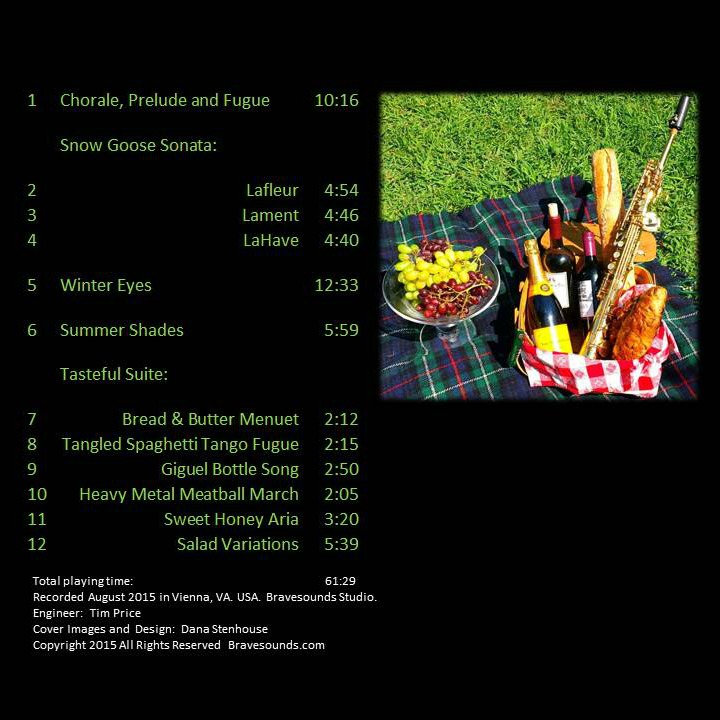![]()


|
|
||
|
|
|
BACH CELLO SUITES CD AUDIO CLIPS
"I have well received and listened to your wonderful CD with Bach music. I really enjoyed it very much. For a lover of saxophone, it is a "tour de force" with always very great musicality. Please accept my best felicitations for this beautiful realization. With my best homage." IN PERFORMING these works on soprano and alto saxophone, I maintain the original key and form, in accordance with the standard editions of Bach's own manuscripts. The only alteration is the octave transposition of the cello suite; the modern cello of today sounds one octave lower then the alto saxophone. However, Bach intended the sixth suite to be performed on a piccolo cello in order to facilitate the playing of the extended upper range, which he utilized composing in this, his final suite for unaccompanied cello. Hence, the range of the alto saxophone more than grants the composer's wish. J.S. BACH (1685-1750) composed all of his unaccompanied music for violin, cello and flute from 1718-1725, seven dramatic years marked by trauma and change - the title page for one of the cello suites reads "lonely but free." The flute partita dates from 1718, while Bach served Prince Leopold as Kapellmeister at Cöthen. In 1720 Bach completed the cycle of violin partitas even as his first wife Marie Barbara (1685-1720) passed away. In November of the same year Bach visited Hamburg, and was offered a post as organist at the Jakobikirche, which he declined. The sixth cello suite was written during an eventful 1725: Bach was working as Thomaskantor in Leipzig, his tenth child, Christian Gottlieb was born, and his forerunner Scarlatti died. All three compositions are based on the traditional baroque dance suite from (i.e. allemande, courante, sarabande, etc.). Bach's use of these dance forms marked an artistic high point of the genre. Had the saxophone been invented 125 years earlier, Bach and his contemporaries would undoubtedly have written for the instrument - while praising its multi-faceted tone color and dynamics
© Copyright 2016 Bravesounds® Music Publications and Productions. All Rights Reserved. |